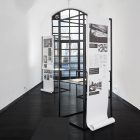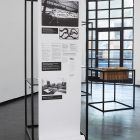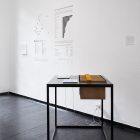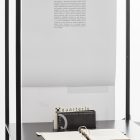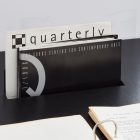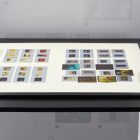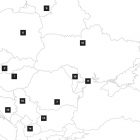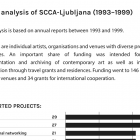control < cultivate > evolve
Soros Center for Contemporary Arts – Ljubljana (1993–1999). Its Organisation and Impact
16 May – 6 June 2019, Škuc Gallery, Ljubljana
Graphic design: Vesna Bukovec
Photo: Klemen Ilovar
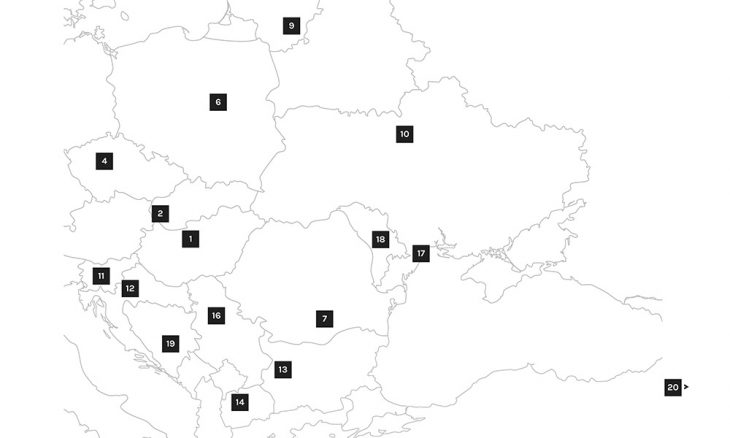
The SCCA Network
The network of twenty Soros Centers (SCCA Network) was established in the 1990s in the former socialist and communist countries of Central and Eastern Europe and the Soviet Union. The network strove to modernise the art discourse and establish a narrative of contemporary art in the “East”, which it sought to achieve through regional networking, articulating artistic tendencies within a historical context, collecting documentation on artists and art, exhibitions and projects, its own magazine on contemporary art and the financing of cultural activities. The network played an active role in directing art, establishing parallel communication channels and promoting the use of new media and technologies. All the centres were upgrades of the SCCA-Budapest documentation centre established in 1984/5. Upon foundation, each centre was given a guide with recommendations on structure and content, which was adapted by the individual centres more or less consistently according to the needs of the local environment. The effects of the westernising tendency were more visible in some settings than in others.
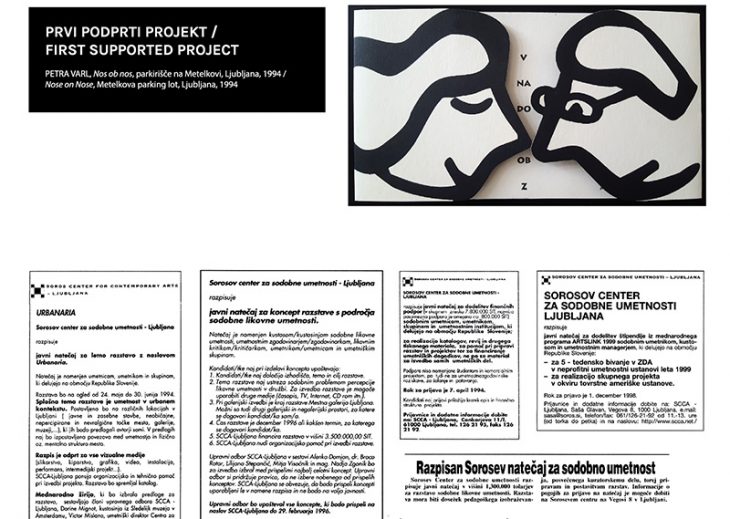
SCCA-Ljubljana
The Soros Center for Contemporary Art – Ljubljana operated between 1993 and 1999 as one of the programmes of the Open Society Institute – Slovenia and as part of the network of twelve SCCA centres. In addition to the grant programmes, it carried out a range of national and regional programmes and its own projects. The work of SCCA-Ljubljana extended to the fields of exhibition activity (annual exhibitions and projects), training courses (World of Art curators’ course) research, publishing, archival work (documenting the history of video art), documentation (artists’ portfolios, video library, slide library) and dissemination (distribution network service activity). The Center was an entry point for many curators and researchers, who wanted to be informed about the local scene, whilst also promoting exchanges with the art centres of the West with individual travel grants (Pot pod noge travel grants, coordination of the ArtsLink programme, the New York art studio (in cooperation with the Ministry of Culture)). Through public calls for submissions and grants, the Center supported cultural activities, while grants for art, exhibiting and publishing projects as well as funding for international cooperation and non-programme costs also played a pivotal role. Due to the reorganisation of the Soros Foundations, the SCCA centres became independent in 2000. They began to function as non-government organisations, merged with bigger institutions or they ceased to function. SCCA-Ljubljana was reorganised into the SCCA Center for Contemporary Arts – Ljubljana.
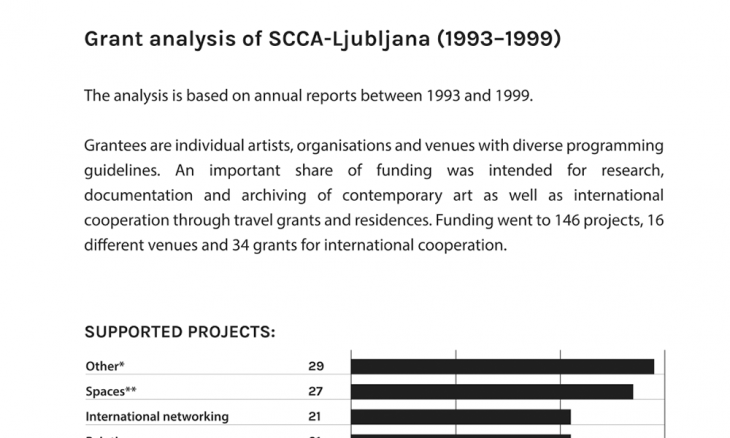
Grant analysis of SCCA-Ljubljana (1993–1999)
Grants analysis: Tia Čiček, with help of Asta Vrečko.
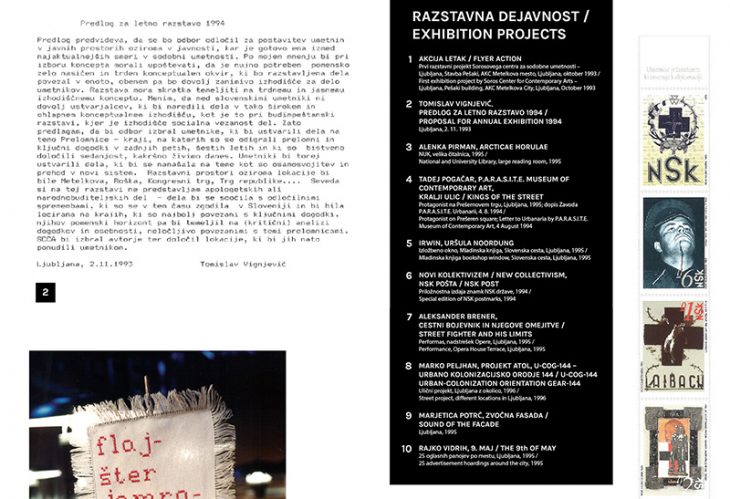
Exhibition Activity
The SCCA-Ljubljana exhibition projects were intended to present contemporary art production and promoted organisational approaches and topics that appeared to be missing in the local cultural arena. The first exhibition project was the Flyer Action (Pešaki building, Metelkova City, 1993), during which a press conference was also held presenting the work and programme of the newly established centre. All SCCA centres prepared so-called annual exhibitions, while often following in the footsteps of the exhibitions curated by Suzanne Meszoly, director of the SCCA-Network, for SCCA-Budapest in their choice of subject and medium. The first annual SCCA-Ljubljana exhibition was Urbanaria. It thematised art in the urban environment and was divided into two parts: the conceptual exhibition of fifty proposals submitted to a public call for submissions (NUK, 1994), and the realisation of thirteen projects at different locations around Ljubljana and at different time periods (1994–1997). The annual exhibition Media in Media (curator Vanesa Cvahte, 1997) was an international exhibition project, which presented art concepts focused on the mass media, their operation, psychosocial and ideological effects, as well as aesthetic qualities. It equally presented various art mediums: video, ambience, photography, avant-garde film and the Internet. The research project on the issues of the reception and evaluation of modern Slovenian art Repressed Art was the last annual exhibition prepared by the Center instead of an exhibition in the form of a symposium (National Museum of Contemporary History, 1998).
In 1997, the World of Art curatorial practices course at ŠKUC took SCCA-Ljubljana under its auspices and participants conceived the exhibitions This Art Is Recycled (1997), When Art Pounds (1998) and Visitors (1999) at the ŠKUC Gallery under the mentorship of Alenka Pirman, Lilijana Štepančič and Igor Zabel.
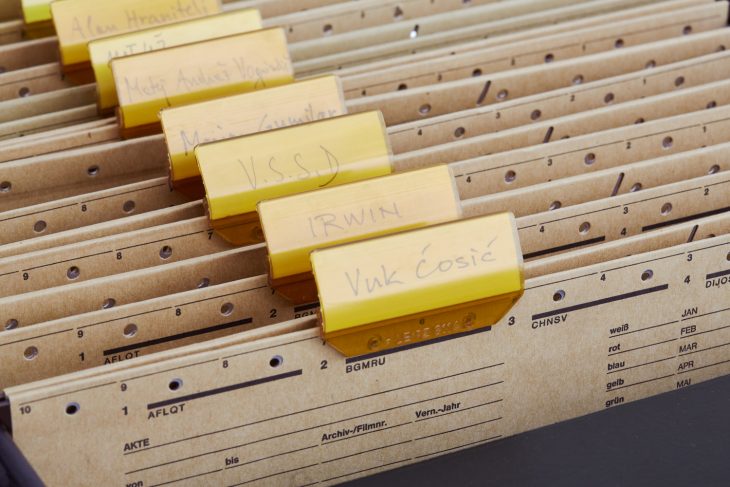
Documentation Programme
One of the tasks of the Soros Centers was also the collection and documentation of information on artists and artistic tendencies, the articulation of these tendencies within a historical context, the translation of the collected data and its conveyance to the central network. The SCCA centres were the upgrades of the SCCA-Budapest documentation centre, which conceived the computer database for documenting art in the early 1990s. The bilingual base (the local language and English) attempted to fill the void in the canonisation of contemporary art in Eastern Europe and served to inform the curators and researchers about local art. To this end, the SCCA centres also collected Artists’ Files, materials, whereas the presentations of selected art projects were most often submitted by artists in response to public calls for submissions. Some SCCA centres had extensive documentary programmes, however, SCCA-Ljubljana declined to collect documentation on artists since the task was already being performed by the Archives Department of the Museum of Modern Art in Ljubljana. The fate of the documentation bases of many other centres remains unknown.
As part of the documentation programme, SCCA-Ljubljana conceived a thematic documentary, archival and research project on video art in the Slovenian arena (1994–1999). This concluded with the publication of Videodocument, which was accompanied by a booklet of essays and a CD-ROM.
SCCA-Ljubljana, in cooperation with Ljudmila, another programme of the Open Society Institute – Slovenia, conceived the Internet Portfolio web project in 1997, which informed artists about the uses of the Internet and its capacity as a tool for a potential means of expression, while also providing them with the opportunity to produce their own online presentation in collaboration with experts.
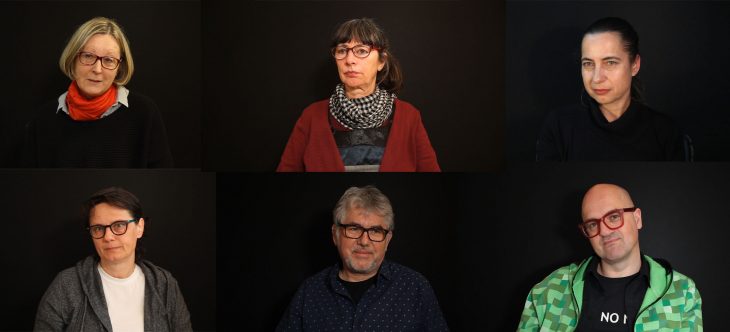
Video Interviews
In video interviews, former SCCA-Ljubljana co-workers, Lilijana Stepančič, Barbara Borčić and Saša Nabergoj, artists Vuk Ćosić and Miran Mohar and dr. Beti Žerovc, art historian and art theorist, were discussing the role and impact of the Soros Center for Contemporary Art – Ljubljana.
Interviewers: Miha Kelemina, Jasna Jernejšek; filming and editing of video interviews: Toni Poljanec.
